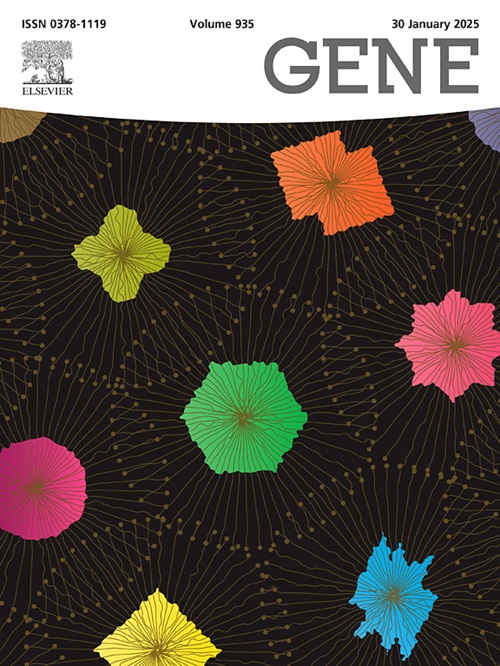Major allelic variants in IRF6 and the association with Non-Syndromic orofacial Clefts: Insights from a Kerala-Based Case-Control study
IF 2.6
3区 生物学
Q2 GENETICS & HEREDITY
引用次数: 0
Abstract
Orofacial clefts, are among the most common congenital defects. Previous research has consistently shown that particular IRF6 gene polymorphisms are related to nonsyndromic cleft lip with or without cleft palate (NSCL/P), which has been verified across many populations. This study aimed to investigate the role of specific IRF6 polymorphisms in nonsyndromic orofacial clefts (NSOFC) within the Kerala population. A total of 100 NSOFC cases and matched controls were genotyped for five IRF6 single nucleotide polymorphisms (SNPs): rs2235371, rs7552506, rs2235373, rs2235375, and rs2013162 using Next-Generation Sequencing. Statistical analyses (VassarStats, SNPstat, and MedCalc) and haplotype construction (Haploview) were performed to assess allelic, genotypic, and haplotype associations. Results showed that the major alleles (primarily “G” in four SNPs and “C” in rs2013162) were significantly more frequent in healthy controls, suggesting a protective effect. Conversely, minor alleles were overrepresented in NSOFC cases, indicating an elevated risk. Four SNPs (rs2235371, rs7552506, rs2235373, rs2235375) demonstrated robust protective effects under multiple inheritance models, while rs2013162 exhibited a less pronounced influence, displaying a notable protective effect only in the nonsyndromic cleft lip with palate (NSCLP) subgroup. Haplotype analysis identified G-C-G as consistently protective, whereas C-A-C and C-A-G conferred a higher risk for NSOFC. Overall, these findings underscore the importance of IRF6 variants in NSOFC etiology and suggest that considering both individual SNPs and haplotypes can enhance understanding of orofacial cleft susceptibility. Further large-scale studies are recommended to validate these associations.
IRF6的主要等位基因变异与非综合征性口面部裂的关系:来自喀拉拉邦病例对照研究的见解
口面裂是最常见的先天性缺陷之一。先前的研究一致表明,特定的IRF6基因多态性与非综合征性唇裂伴或不伴腭裂(NSCL/P)有关,这已在许多人群中得到证实。本研究旨在探讨特异性IRF6多态性在喀拉拉邦人群中非综合征性口面部唇裂(NSOFC)中的作用。使用下一代测序技术对100例NSOFC病例和匹配对照进行5个IRF6单核苷酸多态性(snp)的基因分型:rs2235371、rs7552506、rs2235373、rs2235375和rs2013162。采用统计分析(VassarStats、SNPstat和MedCalc)和单倍型构建(Haploview)来评估等位基因、基因型和单倍型的关联。结果显示,主要等位基因(主要是4个snp中的“G”和rs2013162中的“C”)在健康对照中明显更频繁,表明具有保护作用。相反,在NSOFC病例中,次要等位基因的比例过高,表明风险升高。4个snp (rs2235371、rs7552506、rs2235373、rs2235375)在多遗传模型下表现出较强的保护作用,而rs2013162的影响不太明显,仅在非综合征型唇腭裂(NSCLP)亚群中表现出显著的保护作用。单倍型分析发现G-C-G具有一致性的保护作用,而C-A-C和C-A-G具有较高的NSOFC风险。总的来说,这些发现强调了IRF6变异在NSOFC病因学中的重要性,并表明考虑个体snp和单倍型可以增强对口面部裂易感性的理解。建议进一步的大规模研究来验证这些关联。
本文章由计算机程序翻译,如有差异,请以英文原文为准。
求助全文
约1分钟内获得全文
求助全文
来源期刊

Gene
生物-遗传学
CiteScore
6.10
自引率
2.90%
发文量
718
审稿时长
42 days
期刊介绍:
Gene publishes papers that focus on the regulation, expression, function and evolution of genes in all biological contexts, including all prokaryotic and eukaryotic organisms, as well as viruses.
 求助内容:
求助内容: 应助结果提醒方式:
应助结果提醒方式:


